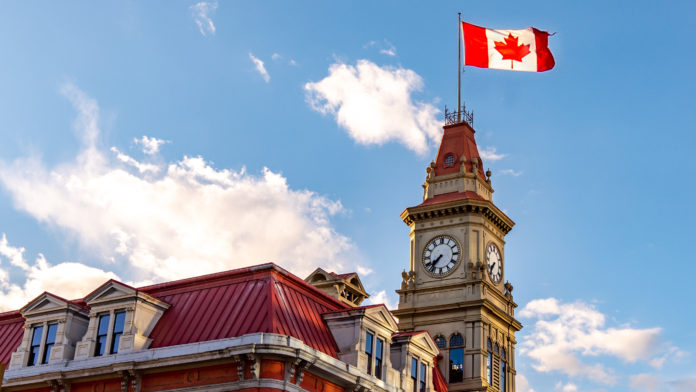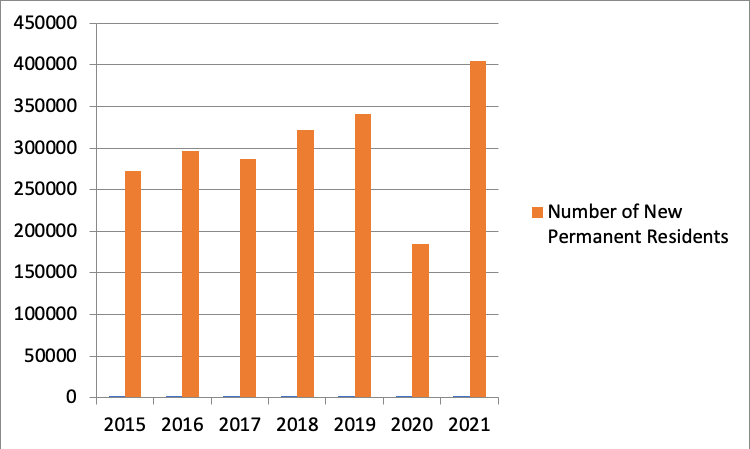
Massive labour shortages and a looming retirement crisis led Canada to raise its immigration targets even higher than last year’s record-breaking 405,000 new permanent residents in a plan unveiled Monday.
Ottawa is now planning to welcome more than 1.3 million newcomers between 2022 and 2024.
“Immigration has helped shape Canada into the country it is today. From farming and fishing to manufacturing, healthcare and the transportation sector, Canada relies on immigrants,” said Immigration Minister Sean Fraser in a statement.
“We are focused on economic recovery, and immigration is the key to getting there. Setting bold new immigration targets, as outlined in the 2022-2024 Levels Plan, will further help bring the immeasurable contribution of immigrants to our communities and across all sectors of the economy.”
Read More Canada Immigration News
- New Ontario Draw Sees Province Issue 206 NOIs Through French Speaking Skilled Worker Stream
- Ottawa, Quebec Work Together To Speed Up Canada Immigration Application Processing
- Children Of Canada Immigrants More Likely To Go To University, Get Better-Paying Jobs
Under the immigration levels plan presented by the immigration minister on Monday, Canada plans to welcome 431,645 permanent residents this year, 447,055 next year, and 451,000 in 2024.
Canada Raises Immigration Levels Beyond Record-Breaking Levels of Last Year
That’s upwards of 20,000 more new permanent residents this year and in excess of 26,000 more than were expected to arrive under the last immigration levels plan announced by then-Immigration Minister Marco Mendicino in late 2020.
Under that previous plan, Canada was to welcome 411,000 new permanent residents in 2022 and 421,000 in 2023.
In the past few years, Canada has embraced ever more ambitious immigration targets.
Permanent Resident Admissions To Canada Rising Since 2015
Prior to the coronavirus pandemic, which significantly reduced immigration in 2020, the previous plan set targets of 351,000 new permanent residents in 2021 and 361,000 in 2022.
Ottawa’s latest plan calls for an immigration level for this year that is 70,645 new permanent residents higher than the target set for 2022 prior to the Covid-19 pandemic.
That’s almost like adding another small city, like Sault Ste. Marie or Sarnia, to Canada’s immigration target for this year alone. Those cities have populations of about 74,000 people.
Monday’s new immigration plan comes on the heels of Canada’s record-breaking welcome of more than 405,000 new permanent residents in 2021.
Labour Shortages and Looming Retirements Fuel Need for More Immigration
“Despite having regained many of the jobs lost during the pandemic, there are still hundreds of thousands of positions in all sectors waiting to be filled,” Immigration, Refugees and Citizenship Canada (IRCC) noted in a statement.
“Immigration already accounts for almost 100 per cent of labour force growth, and with five million Canadians set to retire by the end of this decade, the worker-to-retiree ratio will drop down to only 3:1. This is a clear sign that we have a strong economic need for increased immigration.”
Highlights of the latest immigration plan include:
- overall admissions amounting to 1.14 per cent of the Canadian population by 2024;
- a long-term focus on economic growth, with nearly 60 per cent of admissions in the economic class of programs;
- help for vulnerable populations, like the special measures for granting permanent residence to refugee claimants working in healthcare during the pandemic;
- support for global crises by providing a safe haven through humanitarian immigration to those facing persecution, and;
- talent retention of those already in Canada by granting permanent status to temporary residents accepted through the time-limited pathways for essential workers launched in spring 2021.
Immigration officials noted the latest plan also recognizes the importance of family reunification and helps maintain the 12-month processing standard for spouses and children.
Afghan Refugees Included in Ottawa’s Three-Year Immigration Plan
Ottawa intends to resettle at least 40,000 Afghan nationals over the next two years. So far, more than 7,550 Afghan refugees have come to Canada as a result of these efforts.
Last week, Fraser tweeted his delight that First Nations elders had welcomed some of these Afghan refugees upon their arrival to Canada.
“Over 450 refugees arrived this past week on 20 commercial flights, and Musqueam elders welcomed some of the newcomers to their territory with a cedar brushing and welcome song,” tweeted Fraser. “Welcome home!”
Canada’s 2022-2024 Immigration Levels Plan
| 2022 | 2023 | 2024 | ||
| Overall Planned Permanent Resident Admissions | 431,645 | 447,055 | 451,000 | |
| Economic | Federal High Skilled | 55,900 | 75,750 | 111,500 |
| Federal Economic Public Policies | 40,000 | 32,000 | ||
| Federal Business | 1,000 | 1,000 | 1,000 | |
| Economic Pilots: Caregivers; Agri-Food Pilot; Rural and Northern Immigration Pilot | 10,250 | 11,250 | 12,750 | |
| Atlantic Immigration Pilot | 6,250 | 6,500 | 6,500 | |
| Provincial Nominee Program | 83,500 | 86,000 | 93,000 | |
| Quebec Skilled Workers and Business | See the Quebec immigration plan | To be determined | To be determined | |
| Total Economic | 241,850 | 253,000 | 267,750 | |
| Family | Spouses, Partners and Children | 80,000 | 81,000 | 81,000 |
| Parents and Grandparents | 25,000 | 28,500 | 32,000 | |
| Total Family | 105,000 | 109,500 | 113,000 | |
| Refugees and Protected Persons | Protected Persons in Canada and Dependents Abroad | 24,500 | 25,000 | 25,500 |
| Resettled Refugees – Government-Assisted | 19,790 | 17,260 | 13,000 | |
| Resettled Refugees – Privately Sponsored | 31,255 | 30,795 | 23,000 | |
| Resettled Refugees – Blended Visa Office-Referred | 1,000 | 1,000 | 1,000 | |
| Total Refugees and Protected Persons | 76,545 | 74,055 | 62,500 | |
| Humanitarian and Other | Total Humanitarian and Other | 8,250 | 10,500 | 7,750 |
The majority of the newcomers will be welcomed through Canada’s Economic Class, which includes the popular and successful Express Entry system.
PNP EXPRESS ENTRY NUMBERS ARE FORECAST TO ROUGHLY DOUBLE IN THREE YEARS
Within the stream, federal high-skilled immigrants, those welcome through Express Entry, will number 55,900 in 2022, 75,750 in 2023 and 111,500 in 2024.
Another 40,000 newcomers will come through the Federal Economic Public Policies stream this year and 32,000 next year. That’s the stream that includes the applications of temporary residents who applied to become permanent residents last year and have still to be processed.
Significant increases will also be seen via the Provincial Nominee Program (PNP), with 83,500 newcomers in 2022, 86,000 in 2023, and 93,000 in 2024.
Although the immigration levels plan sets targets, these are only projections and come within a range of values that vary by almost 20 per cent in some cases.
In the past month, new daily cases of Covid-19 have been dropping across Canada and hospitalizations for the illness are trending lower but the lack of certainty surrounding the pandemic also means all of these numbers are subject to change.
Canada’s Family Class immigration intake is also set to grow over the next three years.
Under the targets revealed on Monday, the Family Class is projected to grow from 105,000 this year to 113,500 by 2024.
The numbers will be dominated by spouses, partners and children, accounting for 80,000 newcomers, with parents and grandparents numbering 25,000 this year.
Fewer Refugees Are Expected in 2024 After Wave of Afghanis Has Arrived in Canada
The Refugees and Protected Persons Class, however, is projected to drop somewhat over the next few years once the big wave of Afghan refugees comes to Canada.
The plan allows for 76,545 refugees in 2022, tapering off to 62,500 by 2024.
In 2020, immigration to Canada slowed to a trickle and so Ottawa increased immigration levels for 2021 to make up for the shortfall in newcomers to fill the available jobs. This immigration plan builds on that approach.


